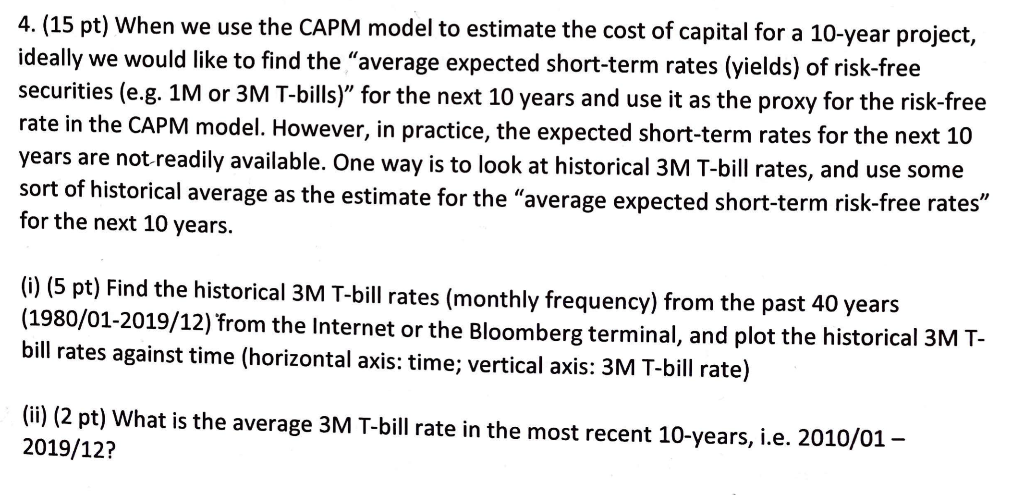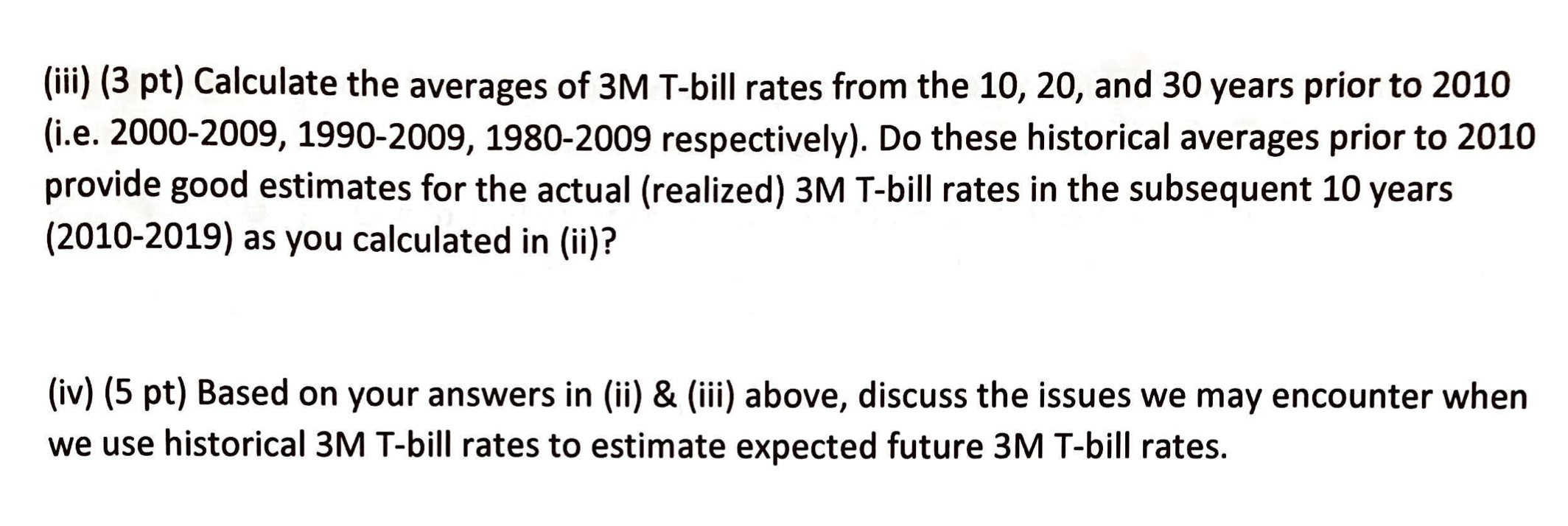

4. (15 pt) When we use the CAPM model to estimate the cost of capital for a 10-year project, ideally we would like to find the average expected short-term rates (yields) of risk-free securities (e.g. 1M or 3M T-bills) for the next 10 years and use it as the proxy for the risk-free rate in the CAPM model. However, in practice, the expected short-term rates for the next 10 years are not readily available. One way is to look at historical 3M T-bill rates, and use some sort of historical average as the estimate for the "average expected short-term risk-free rates" for the next 10 years. (i) (5 pt) Find the historical 3M T-bill rates (monthly frequency) from the past 40 years (1980/01-2019/12) from the Internet or the Bloomberg terminal, and plot the historical 3M T- bill rates against time (horizontal axis: time; vertical axis: 3M T-bill rate) (ii) (2 pt) What is the average 3M T-bill rate in the most recent 10-years, i.e. 2010/01 - 2019/12? (iii) (3 pt) Calculate the averages of 3M T-bill rates from the 10, 20, and 30 years prior to 2010 (i.e. 2000-2009, 1990-2009, 1980-2009 respectively). Do these historical averages prior to 2010 provide good estimates for the actual (realized) 3M T-bill rates in the subsequent 10 years (2010-2019) as you calculated in (ii)? (iv) (5 pt) Based on your answers in (ii) & (iii) above, discuss the issues we may encounter when we use historical 3M T-bill rates to estimate expected future 3M T-bill rates. 4. (15 pt) When we use the CAPM model to estimate the cost of capital for a 10-year project, ideally we would like to find the average expected short-term rates (yields) of risk-free securities (e.g. 1M or 3M T-bills) for the next 10 years and use it as the proxy for the risk-free rate in the CAPM model. However, in practice, the expected short-term rates for the next 10 years are not readily available. One way is to look at historical 3M T-bill rates, and use some sort of historical average as the estimate for the "average expected short-term risk-free rates" for the next 10 years. (i) (5 pt) Find the historical 3M T-bill rates (monthly frequency) from the past 40 years (1980/01-2019/12) from the Internet or the Bloomberg terminal, and plot the historical 3M T- bill rates against time (horizontal axis: time; vertical axis: 3M T-bill rate) (ii) (2 pt) What is the average 3M T-bill rate in the most recent 10-years, i.e. 2010/01 - 2019/12? (iii) (3 pt) Calculate the averages of 3M T-bill rates from the 10, 20, and 30 years prior to 2010 (i.e. 2000-2009, 1990-2009, 1980-2009 respectively). Do these historical averages prior to 2010 provide good estimates for the actual (realized) 3M T-bill rates in the subsequent 10 years (2010-2019) as you calculated in (ii)? (iv) (5 pt) Based on your answers in (ii) & (iii) above, discuss the issues we may encounter when we use historical 3M T-bill rates to estimate expected future 3M T-bill rates








